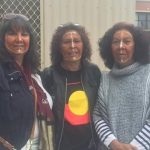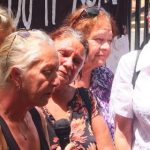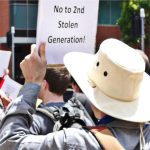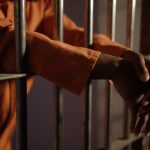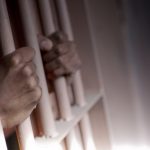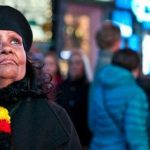Indigenous Child Removals Linked to Incarceration: An Interview With GMAR’s Helen Eason
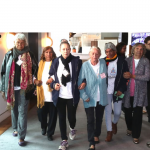
During a recent NT Estimates Committee hearing, it was revealed that 100 percent of children being held in youth detention in the Territory are Aboriginal. This figure is even more staggering when you consider that First Nations peoples account for only 25.5 percent of the overall NT population.
In March this year, 47 percent of children detained in NSW juvenile detention facilities were Indigenous. And in this state, Aboriginal people only make up 2.9 percent of the total populace.
The numbers of Aboriginal and Torres Strait Islander people incarcerated in the adult prison system is also a disgrace. There were 11,737 Indigenous adult inmates being held behind bars in Australian correctional centres in March this year.
This means Indigenous people account for 28 percent of the Australian adult prisoner population, whilst the First Peoples of this continent only make up 2.8 percent of the country’s entire population.
And according to activist group Grandmothers Against Removals (GMAR), there’s a direct link between the appalling overrepresentation of Indigenous peoples in prison and the policy of forcibly removing Aboriginal children from their families, which in place in all Australian jurisdictions.
The ongoing stolen generation
The 2018 Productivity Commission report revealed that the number of First Nations children in out-of-home care nationally was 17,644 in June last year. NSW had the highest number of removed Indigenous kids, with 6,824 in out-of-home care at the time.
It’s the NSW Department of Family and Community Services (FACS) that carry out these removals. And despite the ever-increasing numbers of Indigenous children being taken from their homes, NSW families minister Pru Goward rejected calls to appoint an Aboriginal child and family commissioner.
“We’re not creating a separate system for Aboriginal children,” the minister told ABC radio last month. However, as far as GMAR members are concerned, there’s already a separate system in place for Indigenous children and it was implemented a very long time ago.
GMAR point to the current policies of Indigenous child removals as being a continuation of the paternalistic policies that saw hundreds of thousands of Indigenous kids removed from their homes from the late 1800s right up until the 1970s that’s now known as the stolen generations.
The answer lies at home
In early 2014, Aunty Hazel Collins formed GMAR in the north-eastern NSW town of Gunnedah to advocate for the end of the child removal policy. And the group brought national attention to the ongoing stolen generation via a national day of action on National Sorry Day that year.
Gomeroi and Biripi woman Helen Eason is Ms Collins’s daughter. Today, she’s continuing on the work of her mother, helping to build a national group of representatives, as well as establishing a healing centre in Sydney for those who’ve been affected by these policies.
Sydney Criminal Lawyers® spoke to GMAR spokesperson Helen Eason about how child removals lead to Indigenous children coming into contact with the criminal justice system, the importance for Australian authorities to engage with Indigenous communities and the need for healing.
Helen, how would you describe the situation regarding the forced removal of Indigenous children from their families in this state, as well as nationally?
It’s absolutely disgusting. As we say, there is no reason for our babies to be taken. Our babies aren’t orphans. We do have a lot of family. And babies need to stay with family and in community.
I speak from experience. I fought for one child for seven years against the department. I had four of my children removed from me. And my longest fight against the department was for seven years for one child.
I know what it’s like to have our kids taken from family. My mother was deemed unsuitable to have my last baby that was taken away from me.
The Aboriginal and Torres Strait Islander Child Placement Principle recognises the importance of placing removed First Nations children in the care of their own extended families or communities.
But, you’ve stated that kinship placement isn’t always the answer. Can you explain why this is so?
Kinship placement is good, because they’re placing them with families. But, one of my sons was placed with my partner’s family. And I don’t get on with them. So, there was still that separation for me and my son, even though he was with family.
So, it’s not always that kinship placement works either, because I was only able to access my son four times a year for eight hours.
You’ve stated the current policy of removing Aboriginal and Torres Strait Islander children from their families is a continuation of the stolen generations. So, the policies Kevin Rudd apologised for in 2008 and what’s being carried out today are the same thing.
What’s the purpose of this policy of removing Indigenous children from their families?
This is a policy that has been set up for our people to fail since the beginning. That’s why it’s continuing. It’s not a new policy. It’s a continuing stolen generation.
Us as parents and us as a people are shamed. And we carry that shame from what the system does to us. So, it’s hard for us to speak out, get out there and say what it is.
It’s only the last few years that this knowledge has been out publicly. And that’s why they’re saying it’s a new stolen generation. But, it’s not new. This is a continuation, because this same policy has been running since the beginning.
And this practice of removing Indigenous children from their families isn’t just being carried out in Australia. You’ve pointed out that it’s happening around the globe.
Yes. We’re affected here and in each state in Australia. I’ve just brought a national group of delegated grandmothers together. So, we’ve got grandmothers from every state.
We’re speaking from different voices, but all our voices are saying exactly the same thing.
This isn’t just happening here. This is happening worldwide to all Indigenous cultures.
You point to a link between Aboriginal children being removed from their homes and coming into contact with the criminal justice system in later life.
Can you explain how this works?
Our children are taken from their families. Our children are damaged as soon as they are ripped from their families. They’re going to have behavioural problems. And they’re going to be psychologically damaged.
They’re placed into a home with total strangers. And our kids are not being made to feel a part of that family. Our kids are the poor little black kids.
I’m speaking from the experience of my own children. They speak out now about their time. It was like they were kidnapped.
If a kid’s acting out, well, they’re slipping through the cracks. And then they end up in the juvenile system. They’re then being abused by that system.
That is another system that has been set up for us to fail. It’s not set up for us to try and walk away from there and continue on with this amazing life.
It’s set up for us to fail. And it goes from the youth system into the adult system. And we’re damaged when we walk into those gates. Look at the abuse we cop as soon as we walk into them. We’re forcibly stripped of our clothing. What is that meant to do to our frame of mind?
How are we meant to then tell our stories or deal with our pain and suffering? How are we meant to ask these people for help, when they just abused us as soon as we walked in the front gate?
In NSW, close to 50 percent of children in detention are Indigenous, while in the Northern Territory 100 percent are.
What does this tell us about the fate of First Nations children living under the Australian system?
They are still raping us. They are still abusing us. And they are still killing us to this day, like they have from the beginning.
They need us to make up the numbers in their facilities, so they can continue to get paid. They’re still getting rich off of us.
And what sort of effect are child removal policies having upon Aboriginal and Torres Strait Islander communities as a whole?
The separations and the divisions that they’re creating, along with the pain and the suffering, is damaging.
As I say, addiction is a symptom. Look at the addictions that come out of our hurt and our pain. This system is not dealing with the symptoms, it’s creating more problems for us.
Your mother Aunty Hazel Collins founded GMAR in early 2014. What were her main aims in forming the group?
My mother’s aim was to empower us and give us our voice back. And to educate us about what the system does to us. It’s about empowering each other. And giving us the strength to stand up, go against the government and be educated about how the system works.
That was my mother’s aim. If we could have this in each town and each state, then they’ve got to call on us. They’ve got to hear our voices. They’ve got to use us, because we are the answer. They’re not the answer.
And GMAR has recently been given an eleven room house. Whereabouts is that situated?
It’s in Camperdown.
How did that come about? And what will you be using the place for?
I’ve got a great friend, who believes in, not just myself, but in our people. And he was good enough to give me that place to develop a project out of it. I’m going to put a healing centre in.
It will provide a holistic approach – a wraparound approach for each of our people. Some of our girls need help with living skills. It’s to empower and re-educate them. It’s about having the services under the one roof and us carrying out culturally appropriate programs.
It’s us healing them, identifying the problems and trying to sort through them. It’s not about us falling through the cracks, like we are with service providers, as we have done for so long with them.
It has been asked, how are we the answer? Well, we’re going to show you how we’re the answer.
And lastly, you’ve pointed out that Australian governments are investing heavily in removing Indigenous children from their families, as well as incarcerating Aboriginal and Torres Strait Islander people, whilst investing little in programs of healing.
Helen, what do you believe the answer is from here? What has to take place in order to bring about meaningful change for the First Nations peoples of this continent?
It’s about hearing from the real people. Why don’t they go out from their offices to the prisons and talk to our women, our men and our youth.
They’re going to hear exactly the same thing, over and over. We have been punished and abused for so long. Our pain and our stories are all the same.
Identify the problem and start making change. And the first thing they need to do is look at the policies and get some advice from the real people out in the community. That’s what they need to do: deal with the real problems.


